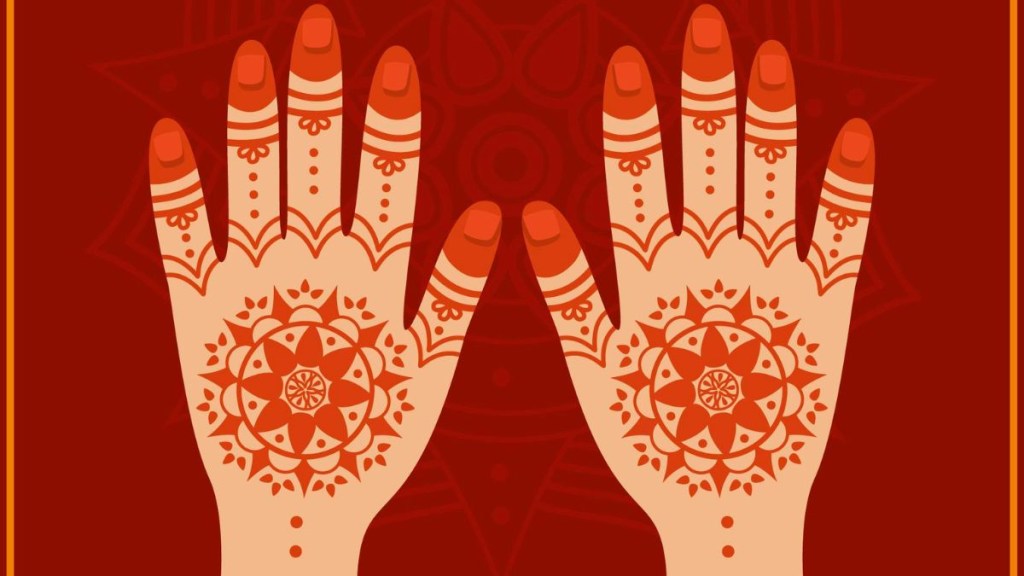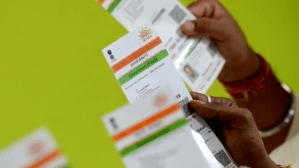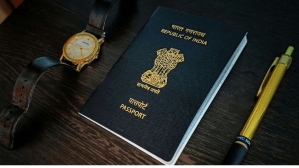It is that time of the year when women dress up in their finest attire, adorn their palms with henna, completing their look with festive bangles. Hartalika Teej, one of the three main Teej festivals, is here. On this day, married women, mainly from North Indian states of Uttar Pradesh, Bihar, and Rajasthan observe a day-long ‘Nirjala’ fast to pray for the long life, success and prosperity of their husbands. The festival is celebrated a month after Hariyali Teej, the Sawan festival, that’s celebrated with equal fervour and enthusiasm. Let’s understand the key differences between Hartalika Teej and Hariyali Teej celebrations.
The vibe
Hariyali Teej falls on Shukla Paksha Tritiya in Shravana month, when the surroundings are greener than ever, and the monsoon season is in its full bloom. As the dreamy and romantic season of Sawan unfolds, the rains and the greenery are what define ‘Hariyali’ Teej the best. It usually falls two days before Nag Panchami.
While Hariyali Teej welcomes the monsoon, with Hartalika Teej the season continues, offering more opportunities to partake in traditional festivities, indulge in good food, and dress up in the best of your traditional clothes. The festival is celebrated during Shukla Paksha Tritiya of Bhadrapada month, usually a day before 10-day Ganesh Chaturthi festivities kick off.
In between the Hariyali and Hartalika Teej, Kajari Teej is observed, where women fast from sunrise to moonrise. In all the Teej festivals, Goddess Parvati and Lord Shiva are worshipped. Here’s why Shiva and Parvati came to be associated with Teej and its festivities.
The origin
Hindu religious texts state how Parvati performed intense penance for Lord Shiva to get married to him. The origin stories of the two festivals revolve around this sacred union and its celebrations.
Goddess Parvati’s penance of 108 lifetimes to win Lord Shiva concluded on Hariyali Teej, the day they entered into matrimony.
On Hartalika Teej, Goddess Parvati’s friends took her to the thick forest to prevent her from getting married to Lord Vishnu against her wish, according to DrikPanchang. The word ‘Harat’ means abduction and ‘Alika’ refers to a female friend. Makeshift statues of Lord Shiva and Goddess Parvati are made with the sand or clay on this day by couples wishing for marital bliss and progeny.
Date
This year Hariyali Teej was celebrated on July 25, while Hartalika Teej is being celebrated on August 26.
The legend of Hartalika Teej
Lord Shiva narrated the legend of Hartalika Teej to Parvati to remind her about her incarnation as Shailputri, king Himalayraj’s daughter. Shailputri was determined to please Lord Shiva from her childhood and prayed for twelve years. She followed it up with penance for 64 years. However, Shailputri’s father on the request of Narada Muni wanted her to marry Lord Vishnu. When the goddess came to know about his father’s intention, she left the home with her friend in a thick forest and started living in a cave near the river. Eventually, Lord Shiva was pleased with her dedication and promised to marry her. Elated, Shailputri observed a fast along with her friend for Shiva, on Shukla Paksha Tritiya during Bhadrapada month. Every year, married women in India commemorate this auspicious day as Hartalika Teej.
Hartalika Teej rituals
Early morning puja is performed during Hartalika Teej, but there is a provision of evening or Pradosh Kal aarti, in case one misses the morning puja muhurat.
On this day, married women wake up early in the morning, take a bath and perform Shiva-Parvati puja.
As per the tradition, the idols of Lord Shiva and Goddess Parvati made with sand are worshipped, an important ritual. The story of Hartalika is also narrated during the puja.
According to DrikPanchag, Lord Ganesha is worshipped before performing Shaodashopachara puja for Lord Shiva and Goddess Parvati.








